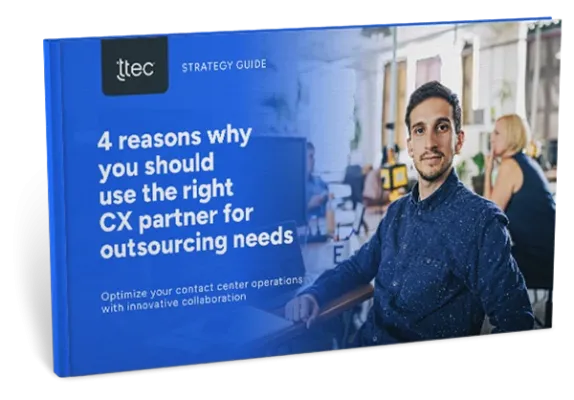Raise your hand if this describes your firm: Everyone wants to be innovative, but not everyone wants to change. Consider automation. Employees understand the benefits of automation and bots but research shows many employees also fear being replaced by technology.
With a long track record of helping clients evaluate, develop and execute strategies for transforming the customer experience, we’ve noticed patterns in how companies go about managing change and the obstacles they run into. Here are three tried-and-true strategies for helping employees not only accept but become advocates for automation solutions.
1. Start small for maximum results
One of the most important aspects of change management is helping employees understand the nature of the change and providing them with the right training. For instance, we worked with an auto manufacturer whose agents were manually entering information from callers while also navigating multiple screens to locate answers. The client was seeking a more efficient way for its associates to provide support and improve the customer experience.
We implemented our Associate Assist solution, which uses artificial intelligence and machine learning to monitor live calls with customers and scan relevant data to serve up critical information to the associate in real time. The associate received a pop-up that was dynamically populated by an intelligent virtual assistant with a summary of the customer's intent or issue, a next-best-action recommendation and/or a deep link to the exact location of the relevant information in the knowledge base.
To implement Associate Assist, we collaborated with the associates to map the reasons customers call and integrate the AI-enabled solution into the client’s knowledgebase. Before rolling out the pilot, we also conducted rigorous tests and training sessions with a group of associates who were selected to use the solution.
This solution is ongoing but pilot results included a 10.4% reduction in average handle time and a 4.3% increase in first contact resolution, as well as driving the Net Promoter Score up 4.4%. Working closely with the agents to identify their pain points and collaborating with them on training the AI was critical to the solution’s success.
Key tip: Whether it's a new tool, software, or a major operational overhaul, employees need to be well-trained for the changes to be effective. But instead of attempting to train all your employees at once, start with a pilot group. The employees using it became advocates and promoters of the experience and you’re able to identify and fix problems sooner.
2. Gather allies
When it comes to managing change, another major challenge is gaining buy-in, awareness and support for a project. Gaining allies—influential stakeholders who understand the value of the project and will advocate for it—is crucial.
Case in point: A telecommunications client was looking to improve the efficiency of its customer-facing and enterprise back-office operations. The organisational leaders were open to automation, but needed to show they were making the right investments in the areas that would have the biggest impact.
We began with a proof-of-concept to show potential savings and how the solution would work as part of the client’s systems. Our team deployed 20 assisted Robotic Desktop Automation (RDA) processes and eight unassisted Robotic Process Automation (RPA) processes for back-office and logistics functions.
Working with the client’s Chief Digital Officer, we created a centre of excellence to capture, promote, collaborate and share new knowledge about RPA with the rest of the company. That led to a comprehensive digital transformation to design, develop, and implement a network of Intelligent Virtual Assistants across more than 200 unique processes in 10 departments including customer service, finance, HR, digital marketing, and logistics. The program resulted in a significant reduction in time and costs by up to 85% in some cases. And the client has continued to evolve its use of automation by deploying intelligent Business Process Management, which combines RPA and Case Management to streamline more complex functions.
Key tip: Present the project as a data-driven, structured and intentional approach, guided by processes with milestones and deliverables. The more effective the framework from the project manager, the better the support and buy-in from the rest of the organisation. Also, ensure planning and strategy development occurs in collaboration with the project team.
3. Prioritise employee feedback
To be effective, change management cannot occur in a vacuum. Front-line employees are often the first to be aware of customer experience problems and know what changes are needed. Engaging them and getting their feedback will assist in smoother and faster transitions.
For example, a private utility company had an outdated and overtaxed phone system, and as a result was unable to meet service level requirements for the customers who called in. We were brought in to design an intelligent solution that would manage call volumes more effectively, provide an expanded ability for self-service and increase customer satisfaction.
We went straight to the utility’s contact centre associates to learn about the customer experience. Employees were engaged throughout the requirements phase, and the new interactive voice response solution was based on their customer interactions, and our best practices. Employee engagement was a critical component of the new system. Keeping the contact centre employees involved in the project helped drive a successful system adoption and the employees became strong advocates of the solution.
Key tip: Some employees react well to change while others are slow to adapt. Have a plan in place to show appreciation for those that accept the change with a positive attitude. Encouraging employee engagement and motivation goes a long way in driving change adoption.
Change for success
Change in business is inevitable. Effective change is not. It’s up to an organization’s leaders to set employees up for success and keep morale high during the change process. While there are many more steps to implementing a successful change strategy, starting with these steps will ensure you’re doing it right from the get-go.














